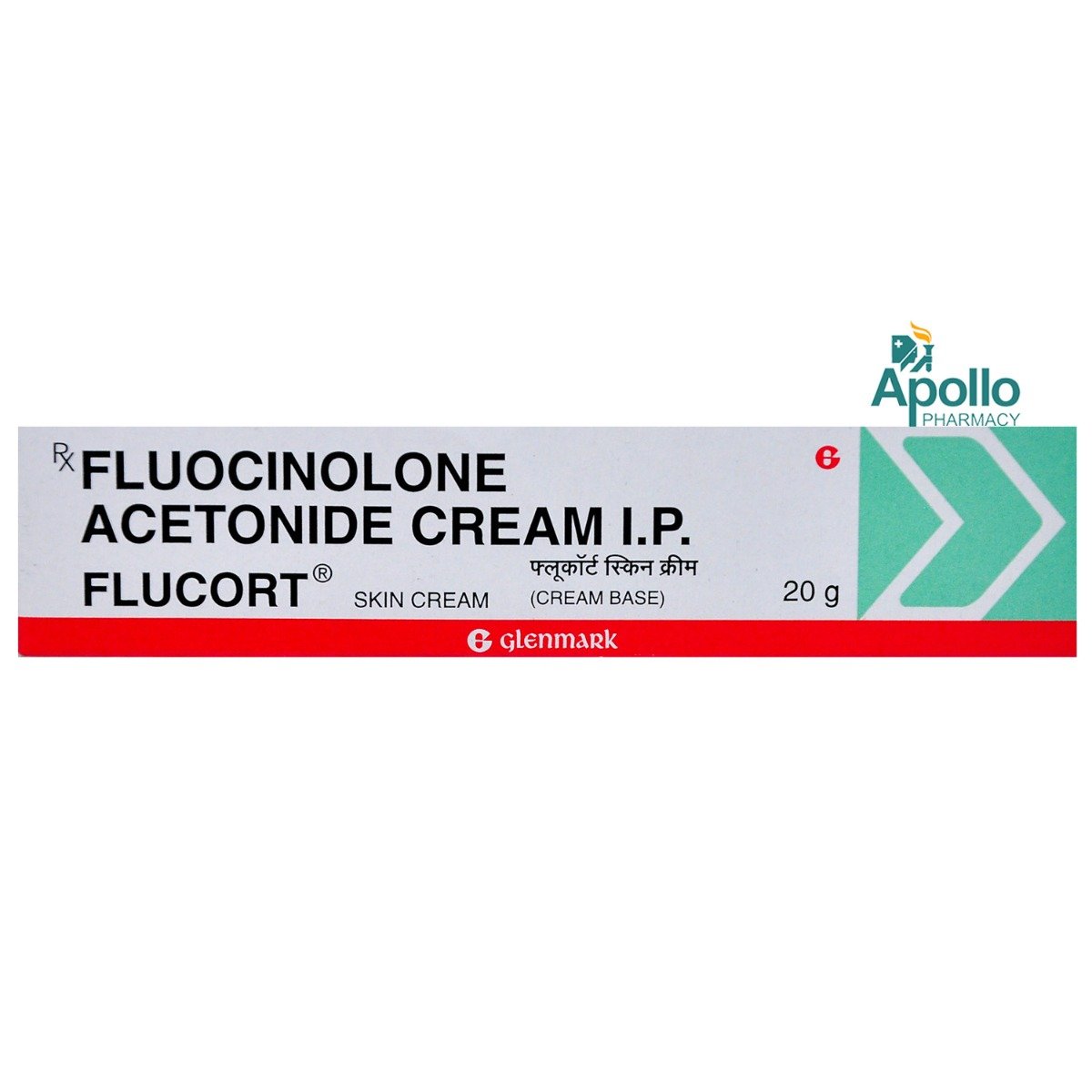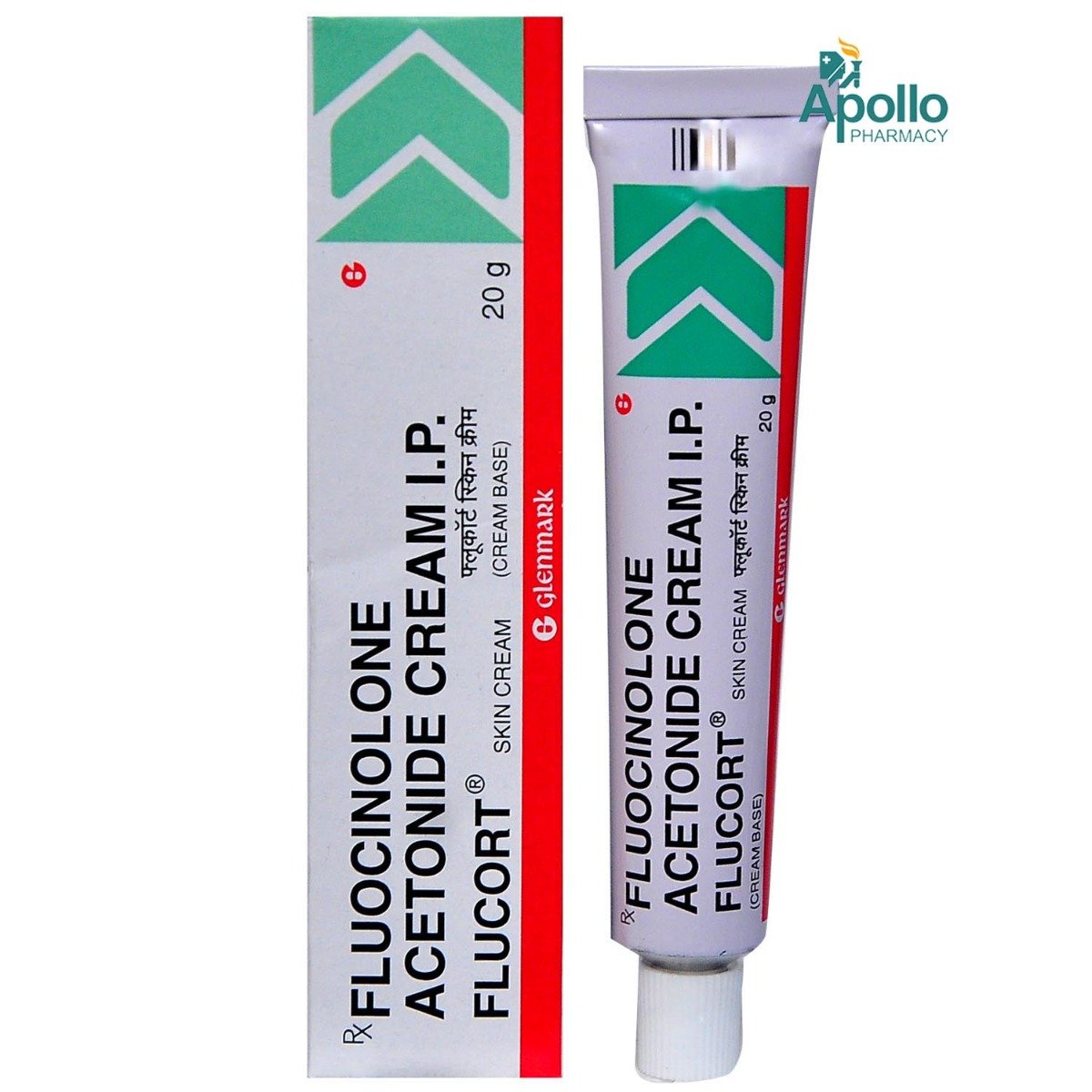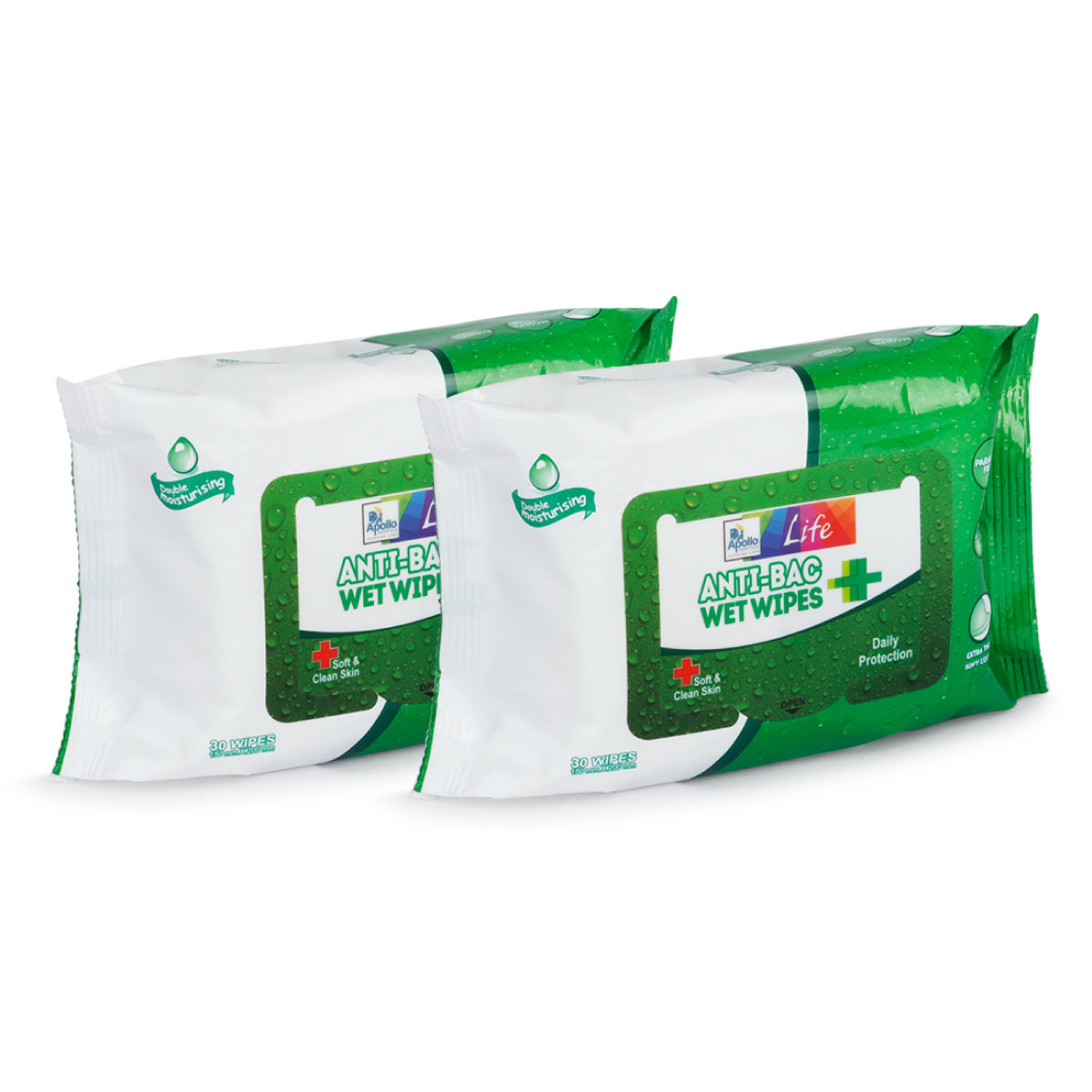Flucort Cream



MRP ₹118
(Inclusive of all Taxes)
₹17.7 Cashback (15%)
know your delivery time
Provide Delivery Location
Composition :
Manufacturer/Marketer :
Consume Type :
Expires on or after :
Return Policy :

Secure Payment

Trusted by 8 Crore Indians

Genuine Products
Therapeutic Class
Country of origin
Manufacturer/Marketer address
Disclaimer
Alcohol
Safe if prescribed
Consumption of alcohol may increase the risk of side-effects.
Pregnancy
Consult your doctor
Flucort Cream is a category C medicine. It should be used with caution in pregnant women as it may harm the unborn baby.
Breast Feeding
Consult your doctor
Flucort Cream may get excreted in the breast milk. So, it should be used with caution in breastfeeding mothers.
Driving
Safe if prescribed
Flucort Cream may not affect the ability to drive.
Liver
Consult your doctor
Flucort Cream should be used with caution in patients with liver diseases. Dose adjustments may be necessary.
Kidney
Consult your doctor
Flucort Cream should be used with caution in patients with kidney diseases. Dose adjustments may be necessary.
Children
Safe if prescribed
Flucort Cream should be used with caution in children as it may affect growth.
Product Substitutes
About Flucort Cream
Flucort Cream belongs to the class of medications called ‘Corticosteroids’ used to treat inflammation and itching caused by skin conditions such as seborrheic dermatitis, psoriasis, eczema and dermatitis. Seborrheic dermatitis is the inflammation of the oily glands present in the skin. Psoriasis is an autoimmune disorder that results in itchy and scaly rashes on the skin. Eczema is the red and itchy rashes on the skin that occur due to allergens such as pollen, food or other irritants. Dermatitis is a generalized term for inflammation of the skin.
Flucort Cream contains ‘fluocinolone acetonide’ which belongs to the class of ‘corticosteroids’. It reduces the release of inflammatory mediators (chemicals that cause inflammation). It causes constriction of blood vessels decreasing the access of cells to the site of injury. This effect helps in reducing the swelling, pain, itching and discomfort.
Flucort Cream is for topical use. You should take this medicine as prescribed by your doctor. The common side-effects of Flucort Cream are burning or itching sensation at the site of application, body aches or pain, cough, sore throat, fever, headache, lightening of normal skin colour or treated areas of dark skin, stuffy or runny nose, tender, swollen glands in the neck, trouble swallowing, unusual tiredness or weakness and voice changes.
Do not take Flucort Cream if you are allergic to ‘fluocinolone acetonide’ or any ingredients present in it. Before taking Flucort Cream, inform your doctor if you have any skin infection, history of reaction to any steroid, liver disease or an adrenal gland disorder. Inform your doctor if you are taking prescription, non-prescription medicines, herbal products or dietary supplements. Also, tell your doctor if you are pregnant or breastfeeding.
Uses of Flucort Cream
Medicinal Benefits Mweb
Key Benefits
Flucort Cream contains ‘fluocinolone acetonide’ which belongs to the class of ‘corticosteroids’. It is effectively used to treat various inflammatory, allergic and autoimmune diseases. It works by interfering with the inflammation process. It reduces the release of chemicals that cause inflammation. It causes constriction (narrowing) of blood vessels, decreasing the access of cells to the site of injury. This effect helps in reducing the swelling, redness, itching and discomfort.
Directions for Use
Side Effects of Flucort Cream
- Burning or itching sensation at the site of application
- Body aches or pain
- Cough
- Sore throat
- Fever
- Headache
- Hoarseness
- Lightening of normal skin colour or treated areas of dark skin
- Stuffy or runny nose
- Tender
- Swollen glands in the neck
- Trouble swallowing
- Unusual tiredness or weakness
- Voice changes
Drug Warnings
Flucort Cream should not be applied to damaged skin or open wounds. It should be used with caution in children as it may delay growth. It can increase your risk of infections as it can suppress the immune system. It should be used with caution in patients with diabetes, liver disease and skin infections. Inform your doctor if you are pregnant or breastfeeding.
Drug-Drug Interactions
Drug-Drug Interactions
Login/Sign Up
Drug-Food Interactions
Drug-Food Interactions
Login/Sign Up
Drug-Diseases Interactions
Drug-Diseases Interactions
Login/Sign Up
Drug-Drug Interactions Checker List
- DESMOPRESSIN
- MACIMORELIN
- NADROPARIN
- BEMIPARIN
- SARGRAMOSTIM
Habit Forming
Special Advise
- Do not use if there is an infection or sore in the area to be treated.
- Though it is unlikely, Flucort Cream may temporarily slow down a child's growth if used for a long time. See the doctor regularly so your child's height can be checked.
Diet & Lifestyle Advise
- Eat a healthy and balanced diet and make sure you sleep at least 8 hours a day for a speedy recovery.
- Include heart-healthy omega 3 fatty acid containing food drinks in your daily diet. You can also use low-fat cooking oil like olive oil, soybean oil, canola oil and coconut oil.
- Avoid contact with any person who is having chickenpox, measles, tuberculosis as it might cause you the same infection as Flucort Cream makes your body prone to infections.
- Opt for food and drinks high in Omega 3 fatty acid to get relief from pain, swelling and inflammation. Omega 3 fatty acid-enriched foods include flaxseeds, walnut, soybean oil, salmon and tuna fish if you prefer non-veg.
- Prefer more whole foods and grains instead of processed ones. Limiting starch may also help decrease inflammation.
- Avoid intake of processed foods, foods high in sugar and fat, as these may cause inflammation.
- Try to fill half your food plate with fruits and veggies.
- Limit salt intake and prefer herbs or spices like garlic, ginger and turmeric, a natural anti-inflammatory.
- Avoid alcohol as it can affect your stomach and intestine and limit the absorption of the important nutrients required by your body.
All Substitutes & Brand Comparisons
RX
Out of StockGeolone 0.025% Cream
Dermawin Pharmaceuticals
₹36
(₹1.62/ 1gm)
69% CHEAPERRX
Out of StockFlucin Cream
Agio Pharmaceuticals Ltd
₹34.45
(₹2.07/ 1gm)
61% CHEAPERRX
Out of StockFluzone Skin Cream 15 gm
Gary Pharmaceuticals Pvt Ltd
₹70
(₹4.2/ 1gm)
20% CHEAPER

Have a query?
Buy best Dermatology products by
Glenmark Pharmaceuticals Ltd
Sun Pharmaceutical Industries Ltd
Klm Laboratories Pvt Ltd
Cipla Ltd
Canixa Life Sciences Pvt Ltd
Abbott India Ltd
Ajanta Pharma Ltd
Intas Pharmaceuticals Ltd
Dr Reddy's Laboratories Ltd
East West Pharma India Pvt Ltd
Alkem Laboratories Ltd
Atopic laboratories Pvt Ltd
Hegde & Hegde Pharmaceutica Llp
Brinton Pharmaceuticals Ltd
Torrent Pharmaceuticals Ltd
Amwill Healthcare Pvt Ltd
Leeford Healthcare Ltd
Palsons Derma Pvt Ltd
Oaknet Healthcare Pvt Ltd
Med Manor Organics Pvt Ltd
Micro Labs Ltd
Dermocare Laboratories Gujarat Llp
Fixderma India Pvt Ltd
Apex Laboratories Pvt Ltd
Mankind Pharma Pvt Ltd
Ipca Laboratories Ltd
Yaher Pharma
Systopic Laboratories Pvt Ltd
Menarini India Pvt Ltd
Ethinext Pharma
Nemus Pharmaceuticals Pvt Ltd
Skinocean Pharmaceuticals
Dermacia Healthcare
Inex Medicaments Pvt Ltd
Lupin Ltd
GlaxoSmithKline Pharmaceuticals Ltd
Talent India Pvt Ltd
Zydus Cadila
Kivi Labs Ltd
Zydus Healthcare Ltd
Hbc Dermiza Healthcare Pvt Ltd
Mrhm Pharma Pvt Ltd
Regaliz Medicare Ltd
Sol Derma Pharmaceuticals Pvt Ltd
Newtrimed Healthcare Pvt Ltd
Wallace Pharmaceuticals Pvt Ltd
Eskon Pharma
Glowderma Lab Pvt Ltd
La Pristine Bioceuticals Pvt Ltd
Mohrish Pharmaceuticals Pvt Ltd
Percos India Pvt Ltd
Rockmed Pharma Pvt Ltd
Macleods Pharmaceuticals Ltd
Praise Pharma
Ethicare Remedies Pvt Ltd
Kaizen Drugs Pvt Ltd
Aurel Biolife
Rely On Pharmaceuticals
Wockhardt Ltd
Galcare Pharmaceuticals Pvt Ltd
Elder Pharmaceuticals Ltd
Indiabulls Pharmaceuticals Pvt Ltd
La Med Healthcare Pvt Ltd
Biocute Life Care
Yap Bioceuticals
Yash Pharma Laboratories Pvt Ltd
Zee Laboratories Ltd
Apple Therapeutics Pvt Ltd
Adonis Laboratories Pvt Ltd
Albatross Healthcare Pvt Ltd
Galderma India Pvt Ltd
Prism Life Sciences Ltd
FDC Ltd
Alniche Life Sciences Pvt Ltd
Salve Pharmaceuticals Pvt Ltd
West Coast Pharmaceuticals Pvt Ltd
Dermarex HealthCare India Pvt Ltd
Arka Vital Science Pvt Ltd
Dermajoint India
Gary Pharmaceuticals Pvt Ltd
Grace Derma Healthcare Pvt Ltd
Karlin Pharmaceuticals & Exports Pvt Ltd
Skinska Pharmaceutica Pvt Ltd
Uniza Healthcare Llp
Alembic Pharmaceuticals Ltd
Cadila Healthcare Ltd
Cadila Pharmaceuticals Ltd
Cosmofix Technovation Pvt Ltd
Human Pharmaceuticals
Indolands Pharma Pvt Ltd
Lyra Laboratories Pvt Ltd
Akumentis Healthcare Ltd
Entod Pharmaceuticals Ltd
Iceberg Health Care Pvt Ltd
Jenburkt Pharmaceuticals Ltd
P and P Dermaceuticals Pvt Ltd
Dabur India Ltd
Indchemie Health Specialities Pvt Ltd
Olcare Laboratories Pvt Ltd
Unison Pharmaceuticals Pvt Ltd
BODY CREAM
Body Lotion
Face Cream
Shampoo
Sun Screen
Face Gel
Soap
Face Wash
HAIR SOLUTION
Face Serum
BODY GEL
Hair Lotion
Hair Serum
Dusting Powder
ANTISEPTIC
FACE CLEANSER
Face Lotion
Body Wash
Body Spray
Eye Cream
FUNGAL INFECTION
Foot Cream
Conditioner
Eye Gel
Cleanser
Hair Cream
Hair Oil
Face Mask
Hair Gel
Sanitizer
Hair Spray
Moisturiser
Skin Ointment
Lip Balm
Capsule
Eye Serum
Intimate Wash
Specialty Supplements
Hand Cream
Facial Spray
SPECIALITY SUPPLEMENT
Face Toner
MEDICATED SHAMPOO
Tablet
Talcum Powder
BABY SUNSCREEN
Body Butter
Body Scrub
DIAPER RASH CREAM
EYE SOLUTION
FACIAL WIPE
Gargle
Hand Wash
Intimate Spray
Lip Serum
Lubricant Gel
MEDICATED CREAM
Nail Polish
VITAMIN D
Customers Also Bought




